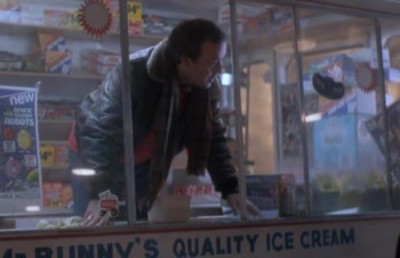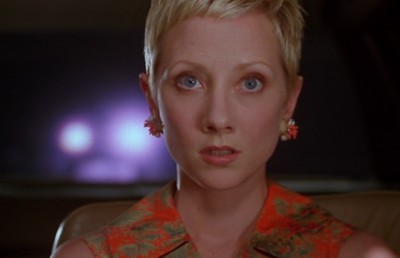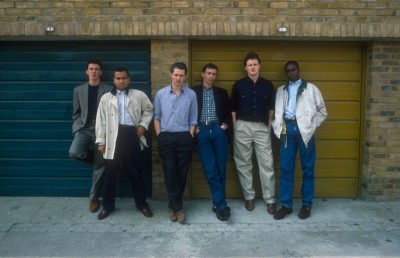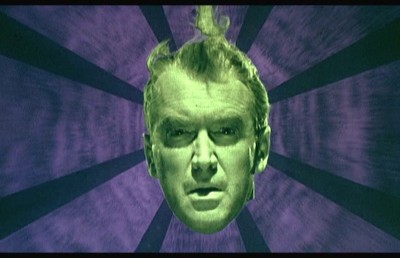Ti Piace Hitchcock?
Hitchcock Homage
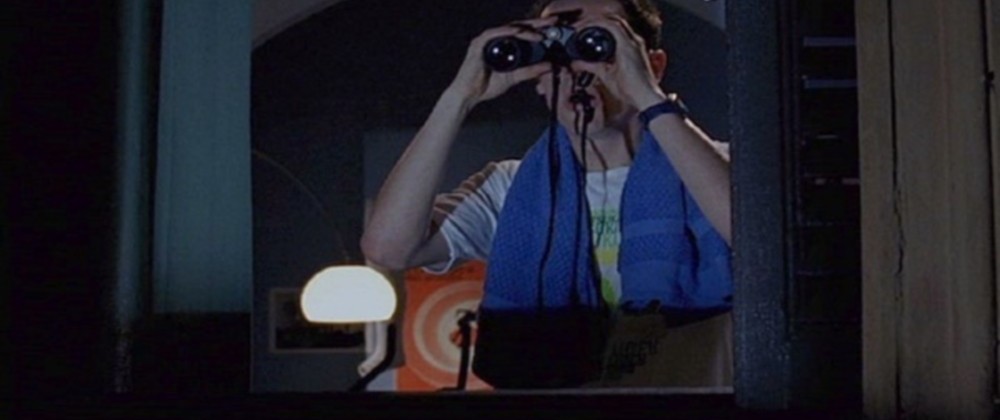
Every new Dario Argento film is waited for with great anticipation by his legion of fans. Unfortunately, his spotty recent track record has tempered the wait with a heavy dose of doubt for even the most faithful of fans, most of whom would agree that Argento’s last ‘great’ film was Opera in 1989. Everything since then has been compromised in one way or another, starting with his first American film Trauma (1993) [1], The Stendhal Syndrome (1996), The Phantom of the Opera (1998), Sleepless (2001), and The Card Player (2004). Of the group I would agree that The Phantom of the Opera and The Card Player are extremely flawed works which hold little interest, but that Sleepless, Stendhal Syndrome, and Trauma, in that order, are works which show enough glimpses of the Argento magic to warrant re-evaluation. I plan to attempt such an evaluation at a further date, but will place my focus here on his latest film, Ti Piace Hitchcock? (Do You Like Hitchcock, 2005).
With Ti Piace Hitchcock?, and his previous very average The Card Player, Argento continues his flirtatious return to the mystery thriller/giallo genre. Flirtatious in the sense that he does not go back full throttle to the giallo, but toys with it by adding a whole other aspect: in The Cardplayer it was a sluggish television-styled police procedural plot and in Ti Piace Hitchcock? it is a postmodern homage to Alfred Hitchcock, which aligns it more with the master of suspense than the wicked gialli of the 1960’s and 1970s. Although it is not as good as Non ho sonno or his previously lambasted Stendhal Syndrome, it is on the whole better than The Card Player, largely because its plot is not as incredulous, and characters not as wooden. Stylistically it is also miles away from vintage Argento of old, but contains enough meandering moments of pure style to raise it above the purely pedestrian: moving camera shots of city buildings and architecture, snippets of garish lighting, and even that old Argento standby, extreme close-ups of the inner mechanisms of door locks. The one area where it does hold a candle to the Argento of old is in the music department, where Pino Donaggio’s score is on par with the works of such giallo auteurs as Ennio Morricone, Goblin, and Simon Boswell. Donaggio establishes a broad range of music but in fine giallo style returns to a few well established motifs. It must be noted that this is a made for TV film, which puts a cap on how violent or misanthropic a film it can be (though this does not necessarily explain the relatively subdued –for Argento– style.)
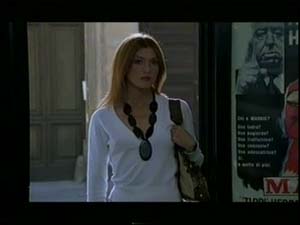
The film begins in the Province of Asti 1990, in a wooded area, where a bespectacled young boy on his bicycle comes across the presence of two young women. He follows them as they enter a cabin, and spies on them as they perform a ritualistic slaughter of a rooster. This is one of the few times we see blood in the film, as sacrificial blood is splattered onto the cabin’s wall and the window where the boy looks on. The sight of the blood startles the boy, which causes the two young women to take notice and chase him through the woods. This opening sets up the film’s central motif: the male hero being caught in the act of voyeurism. The boy, and later young man Giulio (played by a young Michele Soavi look-a-like Elio Germano), is either a bad voyeur, or a ‘willing voyeur.’ The chase continues through the woods (steadicam) but he eludes them. The meaning or relevance of this prologue is to introduce the character’s penchant for looking, and possibly foreshadow the present day narrative which involves the grown up boy, Giulio, tracking and spying on two women he suspects of being murderers.
The narrative moves ahead to present day Turin, and, like Rear Window, opens with the camera functioning as an efficient inroad into characterisation by panning and dollying across artifacts in a room (books, posters, notebook) which reveal that the occupant, Giulio, is a film student (the boy from the opening, we assume). One of the pleasures this film accords will be exclusively the domain of the film buff: trying to catch the many Hitchcock references, which stem from, mainly, Rear Window, Strangers on a Train, Dial M For Murder, and Vertigo, with a few nods also to Brian de Palma (another Hitchcock copyist and for whom Pino Donaggio also worked) and German Expressionism.
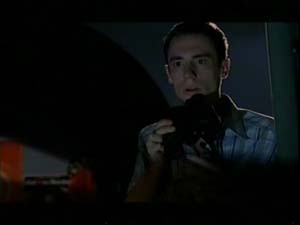
Giulio is doing a thesis on German expressionism, but spends as much time looking across his courtyard spying at his neighbors, with a special focus on a young beauty, Sasha (Elisabetta Rocchetti), who constantly bickers with her mother. He visits his local video rental store, owned by a young man Andrea (Ivan Morales), where we/he sees his neighbor Sasha strike up a conversation over Hitchcock’s Strangers on a Train with another young beauty, the blond haired Frederica (Chiara Conti), after they both attempt to grab the film off the video shelf. This minor incident between the two “strangers in a video store” becomes lodged in Giulio’s consciousness.
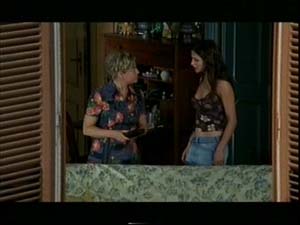
The next key scene is the murder of Sasha’s mother, which occurs while Giulio is asleep in his room. An intruder enters, which cues a series of subjective POV shots. The mother hears noises and begins to explore, thinking it is her daughter Sasha. One good (though common) scare is when she returns to her TV and lowers her head to reveal the killer standing behind her. She is clubbed to death in the film’s only (successful) murder and most graphic scene. Giulio wakes up to the noise. The mother’s bloodied hand streaks downward against the window (a nod to Sisters?). What develops is a scenario where Giulio becomes an amateur sleuth convinced that Sasha and Frederica have hatched a murder plot patterned after that in Strangers on the Train. The questions Giulio (and we) must figure out are, who is involved? Who would want the mother killed? And in exchange for what? Who will the second victim be? The problem is that, unlike most giallo, there are no convincing red herrings, which makes it easy to decipher who the killers since there are only a few characters. The only viable candidates are the two women and perhaps the video clerk Andrea. The only question remains in what combination and for what motive. Like most gialli, the reason is purely monetary (the mother has over 900,000 euros in her bank account).
Giulio as the amateur sleuth follows the two women to a square on his Vespa, where he remains hidden behind a bush and strains to hear what the two women are whispering about (he imagines it may be something related to their murder conceit). Later Giulio follows Frederica in a moment which recalls the scene in Vertigo where Scotty (James Stewart) follows Madeline (Kim Novak) around the city (with plenty of subjective point of view cuts). Giulio discovers that Frederica is being blackmailed for stealing company funds by a gruff, bald male co-worker who extorts sexual favors in exchange for remaining silent. For Giulio this discovery solidifies his gut feeling regards the murder being patterned after Hitchcock’s Strangers on a Train: this man is the missing piece, the victim Frederica wants murdered by Sasha, in exchange for the murder of Sasha’s mother. As in the opening prologue, Giulio is spotted in the act of looking, in one of the film’s best cinematic moments as Argento underscores the revelation by bathing Giulio, who is framed from inside through the bedroom window hiding behind a bush, in a gorgeous cobalt blue light.
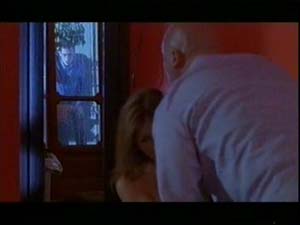
He runs away and takes a fall over a high wall, injuring his leg. The fall cues a strangely protracted chase in pouring rain between the hobbling Giulio, struggling to manage his Vespa, and the lumbering bald man trailing behind through the night street. This signals another weakness if not oddity in the film: scenes that linger beyond their use value. Has Argento just forgotten how to construct an engaging set-piece? Instead we get this ‘chase’ that lasts too long with no payoff. Another protracted moment occurs, ill-fittingly, at the film’ s climax, where Frederica is chased to the roof by Giulio’s girlfriend Arianna (Cristina Brondo) and a police detective and attempts to jump to her death. She is caught in the nick if time by the detective and Giulio’s girlfriend, who hold onto her arm. Will they or won’t they drop her? is played on for much longer than it deserves (alternating between long shots of her dangling off the edge of the roof and closer shots of the two trying to pull her up). They don’t drop her. This leads to a much more visually interesting moment where Frederica admits her crime in the most gorgeously backlit, canted shot. There is no real reason for the canted angle or the golden lighting, other than pure frisson, but it works in the way a giallo should: not (necessarily) for plot but for mood and atmosphere.
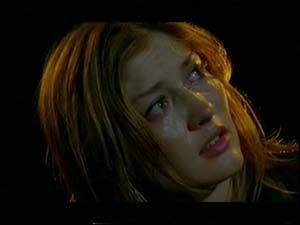
Another of the film’s best scenes comes about 70 minutes in when a seemingly benign moment turns shockingly nasty. The video store clerk/owner Andrea drops by Giulio’s apartment with some DVD films to help occupy his time as he convalesces from an injured leg (which is in a cast). Andrea goes to the toilet and we hear his offscreen voice inform Giulio that the faucet is not working properly. When Giulio enters to investigate he is attacked and thrust into a filled bathtub, where he engages in a fight for his life. This is the nastiest scene in the film, and clearly pushes the envelope with regards what is permissible on television. Andrea desperately tries to drown Giulio, banging Giulio’s injured leg against the side of the tub, and smashing his head against the back of the tub. Giulio is fortuitously saved by the unexpected visit of his mother and her boyfriend, who forces himself into the apartment after hearing signs of a struggle. The boyfriend chases Andrea out of the apartment, down the stairs, and into street traffic, where he is hit fatally by a car.
As I’ve said earlier, the scene where Giulio tracks Frederica during the day on his Vespa is directly out of Vertigo; as another Hitchcock nod, the penultimate scene is a direct homage to Rear Window. Like Jimmy Stewart’s photographer character, Giulio has his leg in a cast. His girlfriend Arianna comes over to visit (like Grace Kelly) and notices across the courtyard a woman in black walking up the back stairs to Sasha’s apartment. Giulio and Arianna have had a rocky relationship since Giulio’s amateur sleuthing, largely because of Arianna’s skepticism regards his crime theories. As a result she wants to prove her worth and decides, against Giulio’s wishes, to go investigate the intruder. While she snoops around in the apartment Giulio stares through his binoculars, cell phone every ready to avert her of any risk. The intruder turns out –not surprisingly- to be Frederica, who we will soon learn was asked by Sasha to kill her mother. Sasha has returned to the scene of the crime to retrieve what could possibly be an incriminating bit of evidence: her house key that she inadvertedly switched for Sasha’s house key. She is eventually chased by Arianna and the detective (whom Giulio had summoned for help) onto the roof, where she attempts to jump off, but is saved and arrested.
As an ineffective twist, Ti Piace Hitchcock? only half-mimics the plot of Strangers on a Train because we never know for sure whether Sasha was asked to commit a reciprocal murder by Frederica. Instead we learn that it was Sasha again who paid Andrea to murder Giulio, after she began to worry about his amateur sleuthing. During the murder attempt on Giulio, we hear Andrea mumble, “Why don’t you mind your damn business….My store is going bankrupt, I need the money….I need to do it.”.
As the plot concludes there are three people implicated: Sasha, Frederica (the initial two) and Andrea. In the final scene Giulio is talking to his mother on the phone and tells her he has changed his thesis subject from German expressionism to Soviet cinema during the Stalinist era. He spots a new attractive female occupant in Sasha’s former apartment, who is all too willing to accommodate Giulio’s voyeurism by lounging around in her lingerie with the curtains fully open. He takes his trusty binoculars and helps himself to the view. This cues a montage of all his previous acts of voyeurism, which brings the film to an oddly unsettling conclusion. Will he continue his unhealthy act of voyeurism, or is this moment a pronouncement of his coming to terms with it? Or did Argento not have a better way to end the film?
As an addendum, I have spoken to several British people who saw the English dubbed version of this film and claim that at a London screening it was practically laughed off the screen. Clearly this is not a masterpiece, but neither is it a film which merits ridicule. In fact there is a certain lightness and comic touch among the characters that Argento handles surprisingly well which makes the film a pleasurable Hitchcock homage. There are also enough nice meandering moments through the streets and architecture of Turin where Donaggio’s music is given free reign, and some impressive cinematography by Frederic Fasano (who shot Asia Argento’s excellent Scarlet Diva). The main complaint of these few people seems to have been the script and the dialogue. Having only seen the original Italian language version, I can only wonder if this reaction was not largely a result of some terrible English dubbing.



